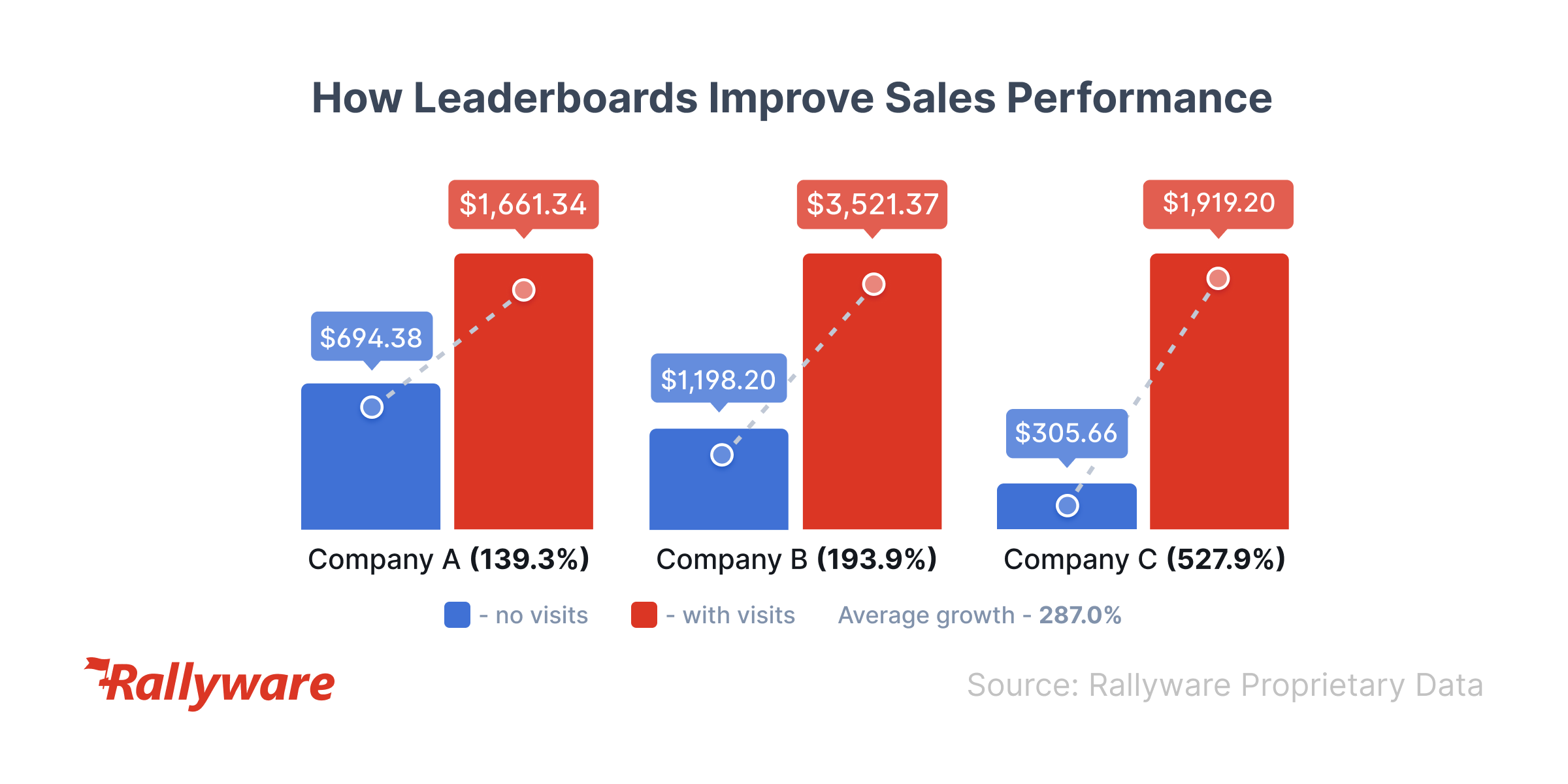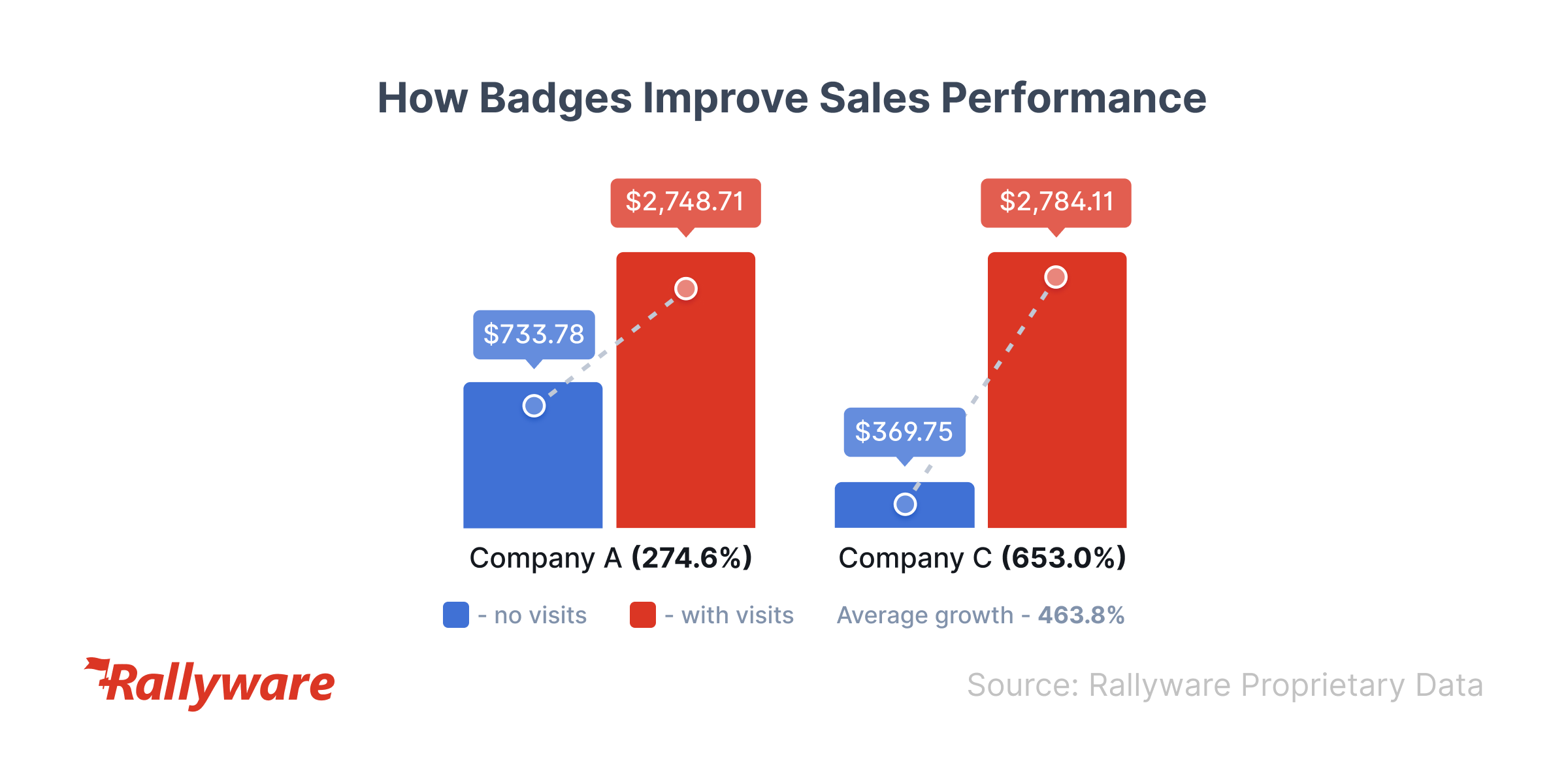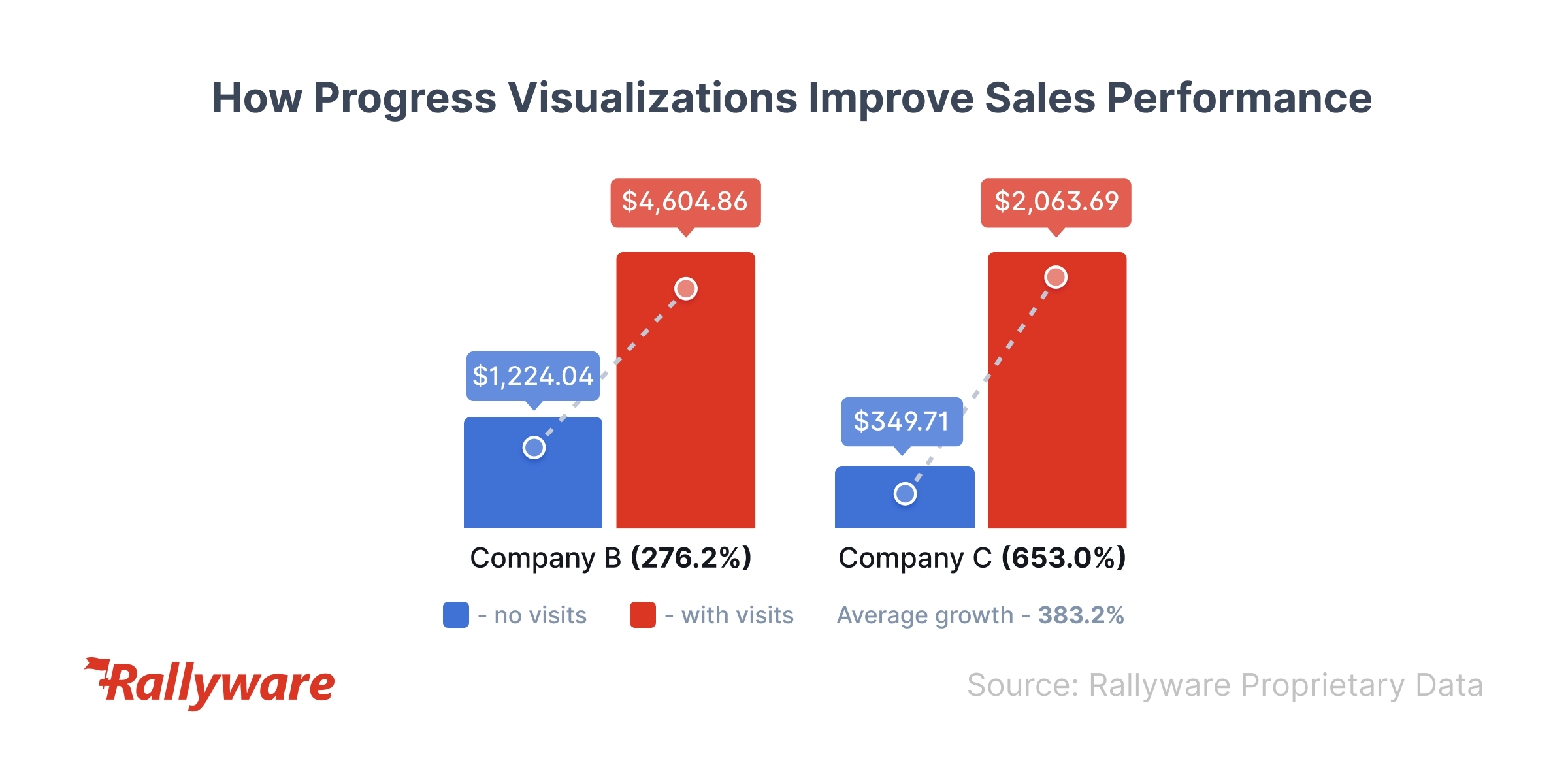How Tech Drove Direct Selling Success During COVID-19 & What’s Coming Next
2023 Data on Gamification and Workplace Productivity
Gamification — the use of game design techniques, mechanics and thinking to engage and motivate people to achieve their goals — has proliferated in workforce apps in the last several years. Making non-game activities more enjoyable and rewarding for employees by incorporating elements such as points, badges, and leaderboards makes intuitive sense, and many workplace functions fit naturally into this framework. But, does it work? What is the data on gamification and workplace productivity? We used millions of data points to track the impact gamified features of Rallyware’s performance enablement platform have on workplace productivity.
Friendly Competition Generates Big Performance Gains
Leaderboards cultivate friendly competition that keeps distributed workforces motivated and connected to their colleagues. Not only that, but tracking progress in relation to one another keeps people accountable and engaged. This gamified feature capitalizes on what psychologists call “the rival effect.”
“When we see someone else just like us being able to complete a task and gain the recognition we seek, we up our game to achieve these outcomes for ourselves,” says professor of psychology, Jillene Grover Seiver.
Tracking performance across a number of members of a distributed workforce, whether we’re talking about the gig economy, direct selling, or retail, is an intuitive engagement booster for workplace productivity. The data certainly bears this out. In an analysis of three Rallyware partners, the average increases in sales for users versus non-users of leaderboards was as high as 527%.

Fast, Personalized Reward and Recognition Supercharges Sales Growth
Badges are another key feature of Rallyware’s approach to gamification, and one users often report being excited about. Leaders at AMSOIL, for example, have described their distributors’ tremendous enthusiasm for fast, goal-aligned recognition. It makes sense: research shows that up to up to 55% of employee engagement is driven by nonfinancial recognition—which serves as the biggest driver of employee experience. Reward and recognition initiatives, however, often fall flat when perceived as transactional and impersonal; personalization is key.
“When it comes to employee recognition programs, like many things at work, one size doesn’t fit all — and surprisingly, very few people want recognition that’s widely shared,” says Deloitte in a report on rethinking employee recognition.
Rallyware’s badges are aligned with individual goals, so that every win contributes to a sense of personal growth in the context of larger organizational goals. The data here is impressive: on average, users versus non users of badges see average sales growth of over 400%.

Continuous, Transparent Feedback is Key to Unlocking Productivity
Giving effective employee feedback can be challenging. Strong emotions on both sides, a focus on character rather than on behavior, and a lack of clarity about what needs to change and why are just a few of the factors that can undermine a feedback session, quotes HBR from an Academy of Management Executive study. Beyond the interpersonal intricacies, checking in regularly on each employee’s individual progress is an impossible task to complete manually for large companies.
Neglecting giving feedback however, can be disastrous for both productivity and employee engagement. According to Gallup, when employees strongly agree they received “meaningful feedback” in the past week, they are almost four times more likely than other employees to be engaged.
And when companies get meaningful feedback right — frequent, transparent, and tied to business outcomes — the effect can be transformative. Greater agility, higher quality work, and increased retention are a few of the benefits Gallup describes of a “fast feedback” culture. This isn’t a top-down approach, either. Employees want to know how their work is being evaluated, and are 3.6 times more likely to strongly agree that they are motivated to do outstanding work when their manager provides daily versus annual feedback.
Rallyware’s progress visualizations provide continuous, automated, and personalized feedback 24/7. Users are always able to see exactly where they are and where they’re going. The impact on sales growth is undeniable: an average of 382%.

The Context for Gamification in 2023
A number of factors have contributed to the rise of gamification for workplace productivity. On the employee side, we’ve seen significant decreases in engagement and, relatedly, retention. On the technical side, we’ve seen the adoption of mobile-first, BYOD, and various just-in-time functionalities for training, upskilling, and productivity. In a nutshell, folks are looking for personalized, automated engagement, and they already have the hardware for it. And while this data analysis explored the impacts of gamification on sales growth, network effects extend to other key KPIs like retention and engagement.
To see how Rallyware’s performance enablement platform can drive workplace productivity and create a culture of feedback and engagement for your organization, check out a demo.
News and Insights on Workforce Training & Engagement
We’re among top-notch eLearning and business engagement platforms recognized for effective training and talent development, helping to empower distributed workforces
Subscribe
